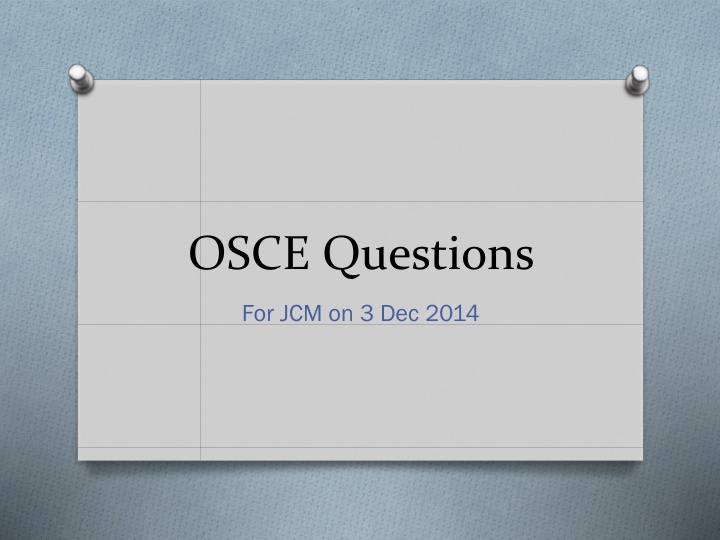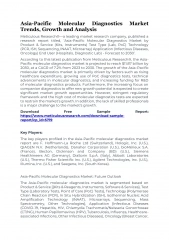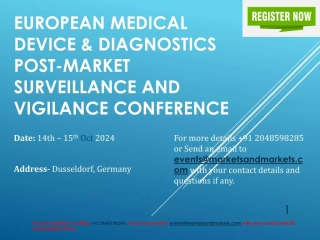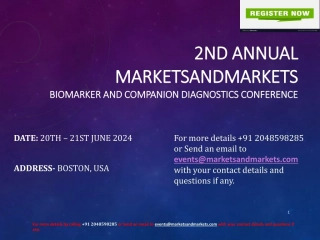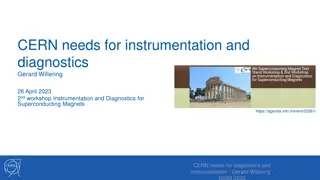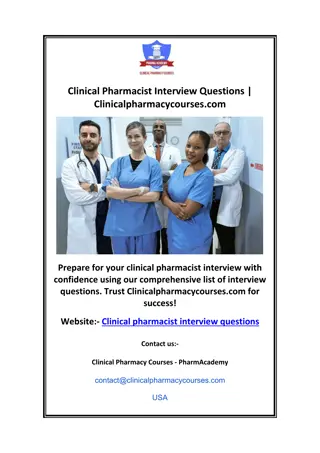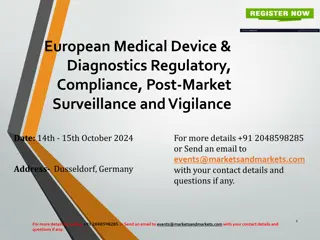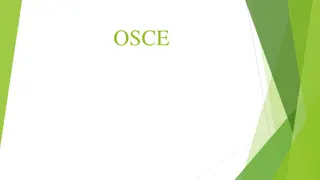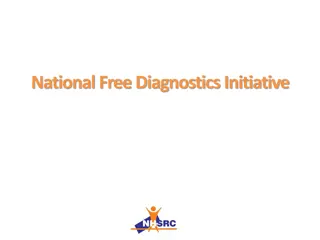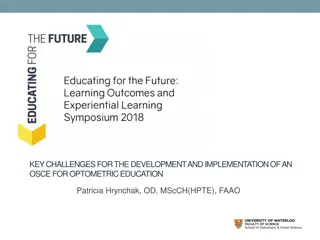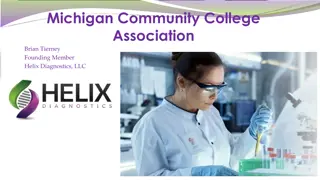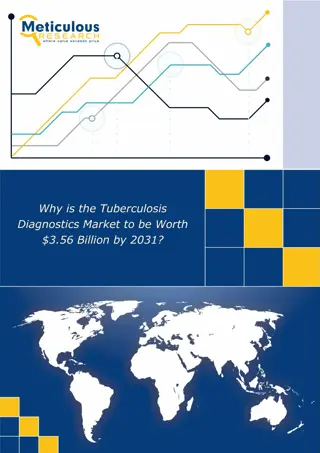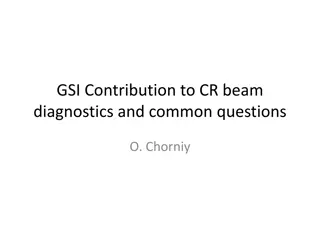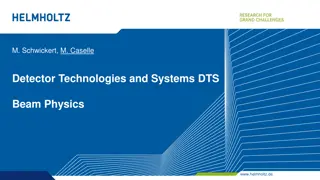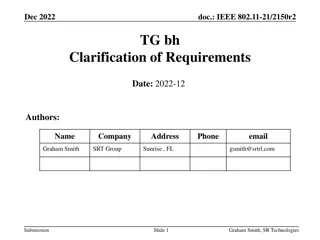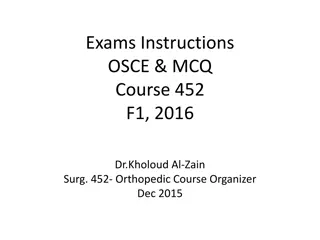OSCE Questions for JCM Dec 3, 2014: Clinical Cases & Diagnostics
In this OSCE scenario, you will find clinical cases of a child with leg pain and a woman with head injury. Questions and answers regarding diagnoses, sonographic findings, diagnostic procedures, laboratory tests, and final diagnoses are provided alongside relevant images.
Download Presentation

Please find below an Image/Link to download the presentation.
The content on the website is provided AS IS for your information and personal use only. It may not be sold, licensed, or shared on other websites without obtaining consent from the author.If you encounter any issues during the download, it is possible that the publisher has removed the file from their server.
You are allowed to download the files provided on this website for personal or commercial use, subject to the condition that they are used lawfully. All files are the property of their respective owners.
The content on the website is provided AS IS for your information and personal use only. It may not be sold, licensed, or shared on other websites without obtaining consent from the author.
E N D
Presentation Transcript
OSCE Questions For JCM on 3 Dec 2014
Case 1 O F/8 Good past health O She has fever with some URI symptoms for past few days. She starts to complain right leg pain for 2 days with a limping gait. No previous history of injury is noted. O Temp38.5 degree, stable vitals
Question 1 O Name 4 possible diagnoses for her complaints (2marks) O Answers: O Septic Arthritis O Transient synovitis of hip O Leukemia O Perthes disease O NAI O SCFE ( not acceptable as it occurs in older age)
Question 2 O Give 2 sonographic findings for right hip scan (1mark) O Answer: O Distended anterior synovial space of right hip >5mm OR >2mm compared with the asymptomatic side O Presence of echogenicic effusion, likely pus
Question 3 O What invasive diagnostic procedure would you consider for her to confirm your diagnosis? (1 mark) O Answer: O Ultrasound guided arthrocentesis
Question 4 O Suggest 4 auxiliary laboratory tests you would order for her condition (2 marks) O Answers: O CBP with D/C O ESR O CRP O Blood culture
Final Diganosis O Septic Arthritis of right hip O USG Guided arthrocentesis drained 10 mL of pus O Blood C/ST and pus C/ST grew MSSA
Case 2 O F/91 O History of Old CVA on aspirin O She lost balance and fell backward, landed with occupit O All along GCS 15/15 and no focal sign O There is abrasion and hematoma over occpiut
Question 1 O Name 2 CT findings in this lady (2 marks) O Answers: O A Hyperdensity at right side of the interhemispheric fissure OR O Acute Falx Subdural hemoatoma O Cerebral atrophy
Question 2 O What are the possible clinical symptoms associated with this condition? (2 marks) O Answers: O Contralateral Monoparesis O Nonspecific Symptoms
Question 3 O Name 2 risk factors for this condition (1 marks) O Answer: O Anticoagulants O Antiplatelet agents O Frontal or occipital constusion O Elderly
Case 3 O M/52 O Known BPH and hyperlipidemia O Chest pain 1.5 hrs with sweating before AED attendance by ambulance O GCS15/15, BP 120/87mmHg, P 68/min, SpO2 100% RA O Not in CHF
ECG O ECG
Question 1 O Give 3 important ECG findings (1.5 marks) O Answers: O Upsloping STE at V2-4 O STE lead I and aVL O STD lead II, III, aVF
Question 2 O What is the cause for this condition and ECG features? (1 mark) O Answer O De Winter ST/T complex O A STEMI equivalent O Suggestive of pLAD occlusion
Question 3 O If no contraindication, Suggest 2 oral medicines with proven mortality benefit you would give him? (1 mark) O Answer: O Aspirin O Plavix, Brillinta, or Effient
Question 4 O Suggest one metabolic condition which can cause similar ECG pattern (0.5 mark) O Answer: O Tall T due to hyperkalemia
Question 5 O What is the your treatment plan? (1 mark) O Answer: O Consult cardiac for primary PCI O Admit CCU for close monitoring
Case 4 O M/44 O Non-smoker O c/o gradual onset dyspnea, headache, sensation of face and throat swelling especially during supine position for 1 week O BP 124/76mmHg, P 94/min, SpO2 97% (RA)
Question 1 O What is the diagnosis? (1 mark) O Answer: O Lung/ mediastinal mass O SVC syndrome
Question 2 O Name 2 life-threatening conditions associated with the syndrome. (1 mark) O Answer: O Cerebral edema confusion O Laryngeal edema UAO
Question 3 O Suggest 3 causes of the syndrome. (1.5 marks) O Answer: O Malignancy (CA lung, lymphoma) O Iatrogenic (e.g. catheter-related) O Mediastinal fibrosis/ vascular disease (vasculitis, extrinsic compression by aortic aneurysm)
Question 4 O Suggest 1 further investigations for this patient to delineate the cause. (0.5 mark) O Answer: O Contrast CT thorax
Question 5 O Suggest 2 treatments in this case. (1 mark) O Answer: O Urgent referral for RT O Endovascular stenting O Steroid
Case 5 O M/56 O History of alcoholic liver cirrhosis with portal hypertension O S/F with left chest wall contusion O BP 84/58mmHg, P 80/min
Question 1 O Describe 3 abnormalities on the CT images (1.5 marks) O Answer: O Splenic laceration O Hemoperitoneum O Fracture left rib
Question 2 O What is the most likely cause of hypotension in the patient? (0.5 mark) O Answer: O Hemorrhagic shock secondary to splenic injury
Question 3 O What is the classification and the grading of this injury? (1 mark) O Answers: O AAST (American Association for the Surgery of Trauma) O Grade III
Question 4 O Suggest 2 treatments if non-operative management is adopted for this patient (1 mark) O Answers: O Correction of underlying coagulopathy O Splenic artery embolization
Question 5 O Suggest 2 indications of emergency laparotomy for this injury. (1 mark) O Answers: O Significant ongoing hemorrhage during observation O Presence of hemodynamic instability requiring exploration for additional intra- abdominal injury
